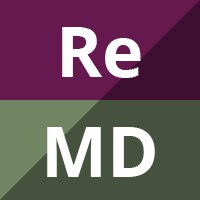
Botulinum toxin type A versus anticholinergics for cervical dystonia
Abstract Background This is an update of a Cochrane Review first published in 2005. Cervical dystonia is the most common form of focal dystonia and is a highly disabling movement disorder, characterised by involuntary, usually painful, head posturing. Currently, botulinum toxin type A (BtA) is considered the first line therapy for this condition. Before BtA, […]

Botulinum toxin type A therapy for blepharospasm
Abstract Background This is an update of a Cochrane Review first published in 2005. Blepharospasm is the second most common form of focal dystonia. It is a disabling disorder, characterised by chronic, intermittent or persistent, involuntary eyelid closure, due to spasmodic contractions of the orbicularis oculi muscles. Currently, botulinum toxin type A (BtA) is considered […]

Botulinum toxin type A therapy for hemifacial spasm
Abstract Background This is an update of a Cochrane Review, first published in 2005. Hemifacial spasm (HFS) is characterised by unilateral, involuntary contractions of the muscles innervated by the facial nerve. It is a chronic disorder, and spontaneous recovery is very rare. The two treatments routinely available are microvascular decompression and intramuscular injections with […]

Botulinum toxin type A therapy for cervical dystonia
Background This is an update of a Cochrane Review first published in 2005. Cervical dystonia is the most common form of focal dystonia, and is a highly disabling movement disorder, characterised by involuntary, usually painful, head posturing. Currently, botulinum toxin type A (BtA) is considered the first line therapy for this condition. Objectives To compare […]

Deep brain stimulation for dystonia
Abstract Background Dystonia is a painful and disabling disorder, characterised by painful, involuntary posturing of the affected body region(s). Deep brain stimulation is an intervention typically reserved for severe and drug‐refractory cases, although uncertainty exists regarding its efficacy, safety, and tolerability. Objectives To compare the efficacy, safety, and tolerability of deep brain stimulation (DBS) versus […]

Iron for the treatment of restless legs syndrome
Abstract Background Restless legs syndrome (RLS) is a common neurologic disorder that is associated with peripheral iron deficiency in a subgroup of patients. It is unclear whether iron therapy is effective treatment for RLS. Objectives To evaluate the efficacy and safety of oral or parenteral iron for the treatment of restless legs syndrome (RLS) when […]

Gamma-aminobutyric acid agonists for antipsychotic-induced tardive dyskinesia
Abstract Background Chronic antipsychotic drug treatment may cause tardive dyskinesia (TD), a long-term movement disorder. Gamma-aminobutyric acid (GABA) agonist drugs, which have intense sedative properties and may exacerbate psychotic symptoms, have been used to treat TD. Objectives 1. Primary objective The primary objective was to determine whether using non-benzodiazepine GABA agonist drugs for at least […]

Calcium channel blockers for neuroleptic-induced tardive dyskinesia
Abstract Background Schizophrenia and related disorders affect a sizable proportion of any population. Antipsychotic medications are the primary treatment for these disorders. Antipsychotic medications are associated with a variety of adverse effects including tardive dyskinesia. Dyskinesia is a disfiguring movement disorder of the orofacial region that can be tardive (having a slow or belated onset). […]

Miscellaneous treatments for antipsychotic-induced tardive dyskinesia
Abstract Background Antipsychotic (neuroleptic) medication is used extensively to treat people with chronic mental illnesses. Its use, however, is associated with adverse effects, including movement disorders such as tardive dyskinesia (TD) – a problem often seen as repetitive involuntary movements around the mouth and face. This review, one in a series examining the treatment of […]

Cholinergic medication for antipsychotic-induced tardive dyskinesia
Abstract Background Tardive dyskinesia (TD) remains a troublesome adverse effect of conventional antipsychotic (neuroleptic) medication. It has been proposed that TD could have a component of central cholinergic deficiency. Cholinergic drugs have been used to treat TD. Objectives To determine the effects of cholinergic drugs (arecoline, choline, deanol, lecithin, meclofenoxate, physostigmine, RS 86, tacrine, metoxytacrine, […]

